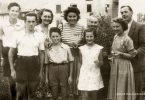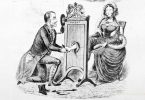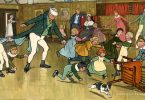The 1800s was a century, but the time period from 1800 to 1810 was also a decade, and it was an important one in world history. There were many things going on around the planet that would have impacted your ancestors in some way. Knowing about these things can help you understand the world your 1800s ancestors lived in better, and, thus, understand them better as the people they were. These are some of the highlights from the decade that kicked off the 19th century and laid the foundations for our modern world.
Science
This was a decade of scientific exploration and experimentation. Particularly with the area of electricity, plenty of experiments were being done. The prototype of the electric battery was invented in this decade, for example. The man who invented it, Alessandro Volta, was given many honors and awards by Napoleon for this, including the Legion d’Honneur.
Steam transportation was another scientific area that was on the move in this decade. The world’s first practical steamboat, the Charlotte Dundas, made her maiden voyage in 1803. The first commercially successful steamboat, the North River Steamboat, made its debut four years after that.
In addition, experiments with railroad technology were going on at this time, with a steam-operated “road locomotive” being built and driven down a road in England in 1801. This invention was followed up with the London Steam Carriage, which debuted in 1803, and the prototype of the first steam-powered railway engine was built the following year.
The world’s first railway began operations in 1803, with the Surrey Iron Railway in England. This first true railroad relied on horses drawing the cars down the rails, rather than engines, though those came soon after.
Culture
There was plenty of culture going on in the 1800s. Beethoven’s Symphony No. 1 premiered in Vienna in 1800. Back published the music for his Sonatas and partitas for solo violin in 1802. Beethoven premiered other symphonies in 1804, 1805, and 1806, and completed writing two others in 1807 and 1808.
Fashion
Europe was the center of fashion in this decade, and the clothing it preferred became popular in other locales, such as North America. Casual styles finally fully supplanted the formal laces, periwigs, brocade fabrics, and wig powder of the previous century. With women’s clothing, the Empire silhouette was the most popular type of dress. The dresses of this style are closely associated today with the clothing worn by women in period pieces based on Jane Austen novels. The Empire style dress was closely fitted to the torso just under the bust, then fell loosely and freely below that. Soft colors and muslin fabrics were most popular for this type of dress, and the style itself was inspired by classical ancient Greek dresses. The sleeves were usually puffed and short, though long sleeves occasionally made an appearance.
The world of men’s fashion was inspired by dandyism, which is most popularly exemplified in the person of Beau Brummell. While older men kept the more formal, wig, and powder-based fashions of the previous century, younger men wore their hair with short curls and long sideburns and dressed in clothing that was flatteringly cut and professionally tailored to each individual frame.






